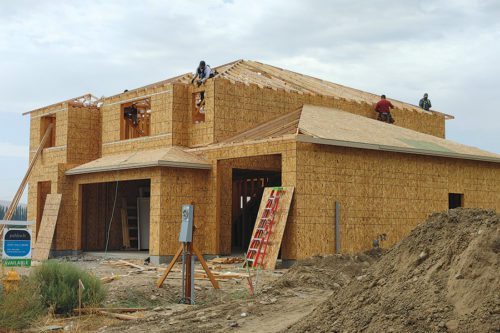
Home » Report: Homebuilding costs increase dramatically over last decade
Report: Homebuilding costs increase dramatically over last decade

February 14, 2024
The cost to build new homes in Washington increased dramatically over the last decade, according to a new report from the Building Industry Association of Washington.
All phases of construction in residential homebuilding have seen increases, ranging from 16% to 107%.
“As the cost of housing makes headlines every day, it’s important for policymakers to understand what’s behind those costs,” said Andrea Smith, BIAW policy and research manager. “Building materials, labor costs and regulatory requirements all come together to increase the bottom-line cost to build. Those higher costs drive thousands of families out of the single-family-housing market. They also increase costs to build apartments and other government-subsidized housing.”
Sitework, the process for preparing a construction site for building, saw the most substantial increase at 107%. The report predominantly attributed this rapid increase to the shortage of skilled labor. Sitework includes everything from clearing and grading to foundation work. BIAW points out that the tasks all require skilled professionals to do the work.
Costs for building exterior walls climbed 80%, the report said.
BIAW asserts the new minimum envelope requirements in Washington’s new energy code drive this increase. These minimum requirements demand more expensive and extensive windows and insulation.
While it’s typical to refer to plumbing, mechanical and electrical as major system rough-ins, the report separated them out.
Framing saw a 66% increase, while electrical costs surged 65%, both influenced by the labor shortage as well as new electrical code requirements, the report said.
Plumbing costs increased by 56%. It does not appear material costs increased so BIAW attributed this increase to the shortage of skilled workers.
The mechanical segment of the industry exhibited cost increases of 45%. This industry segment also experienced modest gains in labor costs. However, the added costs associated with heat pump systems drive this cost as well, despite being heavily incentivized in the energy code, the report said.
This legislative session, BIAW supported two bills to help build the future workforce needed to address the skilled trades shortage.
Builders testified about the importance of easing barriers to apprenticeships in residential construction trades. HB 2087 failed to pass out of the House Labor and Workplace Standards Committee.
BIAW also supported reforms to the Washington State Energy Code, recommending the state adopt the model International Code Council Energy Code, moving away from a completely custom building code. If the State Building Code adopted the ICC’s model energy code, builders could more easily access tax credits under the Inflation Reduction Act. This would make things easier and less expensive for homebuilders and buyers alike.
BIAW also recommended funding a Small Business Outreach Grant through the Department of Labor and Industries to conduct outreach activities to help employers learn about cost-saving, safety incentive, retro programs like ROII. These programs help reduce worker fatalities and injuries and lower workers compensation premiums paid by workers and their employers.
Latest News Real Estate & Construction Local News
KEYWORDS February 2024
Related Articles



